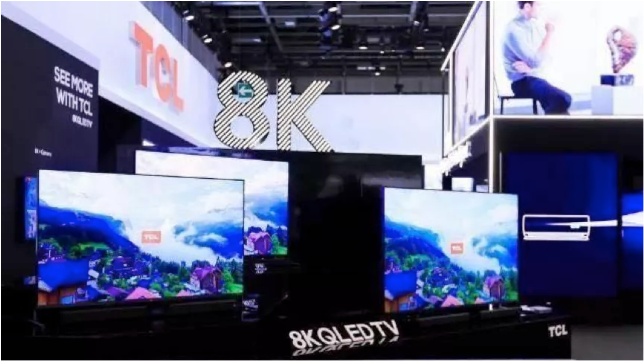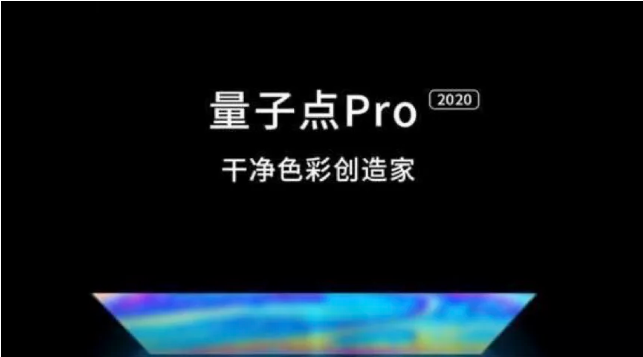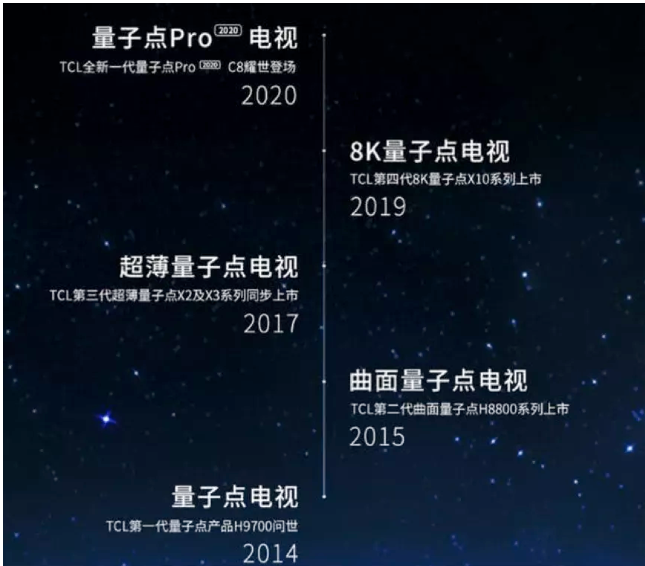Quantum dots + large screens, TCL tries to open up the
QQ Academic Group: 1092348845
Detailed
Since the beginning of 2020, the sudden outbreak of the epidemic has cast a haze on the entire consumer market. Recently, as the quarterly reports of the domestic home appliance market have been released, the outside world has also witnessed the difficulty of the home appliance industry this year.
Among them, the field of major appliances is the hardest hit area affected by the epidemic, and almost none of them are spared. According to data from Aowei Cloud Network, in Q1 of 2020, domestic retail sales of refrigerators were 4.68 million units, a year-on-year decrease of 22.6%, and retail sales were 13 billion yuan, a year-on-year decrease of 28%; washing machine retail sales were 6.03 million units, a year-on-year decrease of 27.4%, and retail sales were 107. The retail sales of air conditioners fell by 46.6% year-on-year to 5.24 million units, and the retail sales fell 58.1% year-on-year to 14.9 billion yuan.
Let’s look at the TV industry again. Q1, which accompanies the Spring Festival every year, is often the peak season for traditional TV sales. However, the data from the “Summary of the Development of China’s Color TV Industry in the First Quarter of 2020” shows that China’s color TV sales in the first quarter of this year were 9.96 million units, a year-on-year decrease. 20.1%, retail sales of 23.8 billion yuan, a year-on-year decrease of 33.8%, and sales volume hit the lowest value in a single quarter since 2016.
The low tide is not limited to Q1. Even the highly anticipated "5.1" has failed to usher in a "retaliatory consumption wave" as a whole, and the purchasing power of the people has not been fully released. Aoweiyun.com‘s omni-channel push data shows that the retail sales of China‘s TV market during the May 1st promotion period was 1.58 million units, a year-on-year decrease of 8.9%; the retail sales scale was 4.3 billion yuan, a year-on-year decrease of 27.3%.
Fortunately, there is no lack of glimmers to ignite the future in the overall dimness. Despite the overall impact of the epidemic in the TV market, there are still brands growing against the trend. For example, data shows that online sales of TCL TVs in February and March of this year increased by 74.2% year-on-year. In the first quarter, sales of TCL quantum dot TVs increased by 217.1% year-on-year, driving TCL‘s domestic market sales from February to March up by 9.8% year-on-year.
As the epidemic slowed, this rapid growth also continued into the second quarter. According to data from Zhongyikang, during the May 1st period, TCL TV online and offline retail sales increased by 2.24% and 7.3% respectively, with market share of 13.8% and 19.43% respectively, leading the entire color TV industry.
Well, unlike the heat outside the window at this moment, the global color TV market as a whole is still experiencing a cold winter, but in many people’s expectations, TCL, which uses quantum dots as its power point, may buck the trend and lead the big screen trend. To a certain extent, the color TV industry has turned from winter to spring.

Open the "reservoir" gate
First of all, needless to say, the continuous evolution of quantum dots is changing the future of large-screen TVs. A strong proof is that Samsung and TCL, both of the top two in the global TV market, continue to make efforts in this field.
And if you are well versed in the principle of its operation, you will think that quantum dots are a very fascinating technology: by applying a certain electric field or light pressure to this nano-scale semiconductor material, they will emit light of a specific frequency, the frequency of light. Will change with the size of the semiconductor-in other words, just because of the difference in size, when the light hits the quantum dot or when the quantum dot is hit by electrons, it will emit light of different colors, and the color is bright, and the restoration is more High, low power consumption and environmental protection, long service life.
When this wonderful material technology meets the ever-increasing TV screens, they quickly form a "1+1>2" symbiosis relationship. They enhance each other‘s competitiveness and continuously release their joint forces, making the quantum dot large screen the current A highly competitive high-end TV choice.
The energy generated by the superposition of these two trends is in fact a matter of course.
Let’s first look at the large screens. Although the Q1 and 5.1 TV markets are generally bleak, it is gratifying that the large-size TV category ushered in an explosion, with the average size breaking through 50 inches in Q1 for the first time, especially the 75-inch TV that grew significantly during May 1st. , The market share increased by more than 2%, of which the offline market accounted for more than 5%.
In fact, almost every friend around me who has used a 75-inch TV called this a "journey that can‘t be returned". The large 75-inch screen belongs to the typical "you can‘t go back" series.
This is not difficult to understand. In the past few years, even the size of mobile phone screens has doubled (up to the current limit). I think as long as the objective conditions such as technology are met, people seem to be unable to make TVs "bigger". reason. Moreover, many authoritative organizations have argued that a living room width of 2.5 meters is actually the most suitable for a 75-inch TV, because when the vertical viewing angle of the image is 20° and the horizontal viewing angle is 36°, people will have a better sense of visual presence. This viewing angle is not Will cause fatigue due to frequent eye movements.
This is why, TCL started to deploy 75-inch+ products very early, and this year it has launched a number of new products featuring 75-inch+ screens. To a large extent, they are leading the wave of large screens.
And they can do this, undoubtedly benefiting from quantum dots. Compared with other technology paths, the higher image quality and higher cost performance of quantum dots constitute the core driving force to adapt to the wave of large screens.
More importantly, while TCL promotes the popularization of large screens with quantum dots, it can also “feed back” the competitiveness of quantum dots with large screens, start the snowball effect of increasing revenue, and allow quantum dots and large screens to co-evolve and constantly oscillate their advantages. enlarge.
In the eyes of many people in the industry, the combination of quantum dots and large screens complements each other, which may disturb the "reservoir" of demand that is about to overflow.

According to general statistics, the number of household TVs in China is about 500-600 million, but the proportion of old products that exceed the safe life cycle is quite high. These traditional LCD TV-based products urgently need to be upgraded and iterated, so in many people’s eyes In the color TV industry with no major technological breakthroughs, consumer demand is actually like a reservoir that has been "storing water", and the dance of large screens and quantum dots is likely to step on the pace of the era of replacement, and thus work together. Open the gate.
The right to speak in the industry chain
Of course, to open the reservoir gate requires continuous accumulation of power from the technical side.
Fortunately, as the first domestic company to master the entire industrial chain from panel manufacturing to smart terminal manufacturing, TCL’s technology layout on quantum dots is very early, and it has the ability to produce from upstream materials, intermediate manufacturing, and downstream TV sets. The complete ecological chain.
In my opinion, this means two things.
The first is the advantage of technological innovation. Public information shows that TCL released the first generation of quantum dot TVs as early as 2014. It has invested more than 100 million in quantum dots in 5 years and participated in the formulation of more than 50 image quality standards. The application of quantum dot patents ranks first in the world. Two...This allows them to continue to evolve quantum dot technology.
For example, on the newly released C8 and C10 series TVs this year, the latest generation of quantum dot Pro 2020 technology is used. It is the pinnacle of current TCL quantum dot technology. It uses more high-quality nano-level luminescent materials. The color gamut value is as high as 157% under the BT.709 standard, which brings more than 1 billion color displays, and the color purity has also increased by 58.3%. , And the color life can reach 6000 hours without fading.
It can be said that this technology maximizes the characteristics of quantum dots with high color gamut, pure chroma, and long color. In addition, Quantum Dot Pro can also work with technologies such as 8K to dance freely on the big screen, and together maximize the value of the big screen.

The second is the advantage of industrial resources. It is well known in the industry that the sudden epidemic has allowed TCL to complete a very convincing stress test. It should be understood that most TV brands that are "subjected to others" because they do not have their own production lines have encountered certain difficulties in resuming work and production, which has slowed the pace of recovery. On the contrary, TCL held online at the end of February. New product launch conference, and quickly realize the distribution of goods in various channels.
This benefits from its strong industrial chain control. In addition to having its own production base, TCL also owns China Star Optoelectronics, an important global screen panel supplier. Although the latter‘s products are also supplied externally, top-of-the-line technology like Quantum Dot Pro 2020 is currently only available on TCL‘s own flagship machine use.
In other words, different from the relative passiveness of most manufacturers in the OLED industry chain, the industry chain‘s right to speak after years of precipitation allows TCL to be in the field of quantum dots while ensuring stable "output" (supply) and "friendship" ( price).
Overlooking the entire high-end large-screen market, this also explains to a certain extent, why Zhongyikang’s survey results show that the domestic sales of quantum dot TVs in 2019 were 2.5 times that of OLED TVs; among large-screen TVs above 75 inches, quantum dot TVs Dot TV is 12 times that of OLED TV.
In addition, looking at the world, the latest report of Trend Force Optoelectronics Research (Wits View) also shows that the global TV shipment kinetic energy affected by the epidemic is expected to decline by 5.8% annually, reaching 205.21 million units. However, QLED TVs are expected to be released. The annual volume growth of 41.8%, reaching 8.27 million units; this year, the annual growth rate of OLED TV shipments is only 7.8% to 3.375 million units.
Of course, in the Chinese market, many orders for quantum dot TVs this year will come from the "618" consumer feast.
I believe that people’s long-standing consumer desires may be released in the “618” major home appliance market. I also believe that for consumers who want to change to a TV, in this "618", "large screen + quantum dots" may be the most rational choice at present.
This information is from the Internet for academic exchanges. If there is any infringement, please contact us and delete it immediately
- Previous: AM: Quasi-binary trans
- Next: IF 16.9! Self-assemble


 Academic Frontier
Academic Frontier